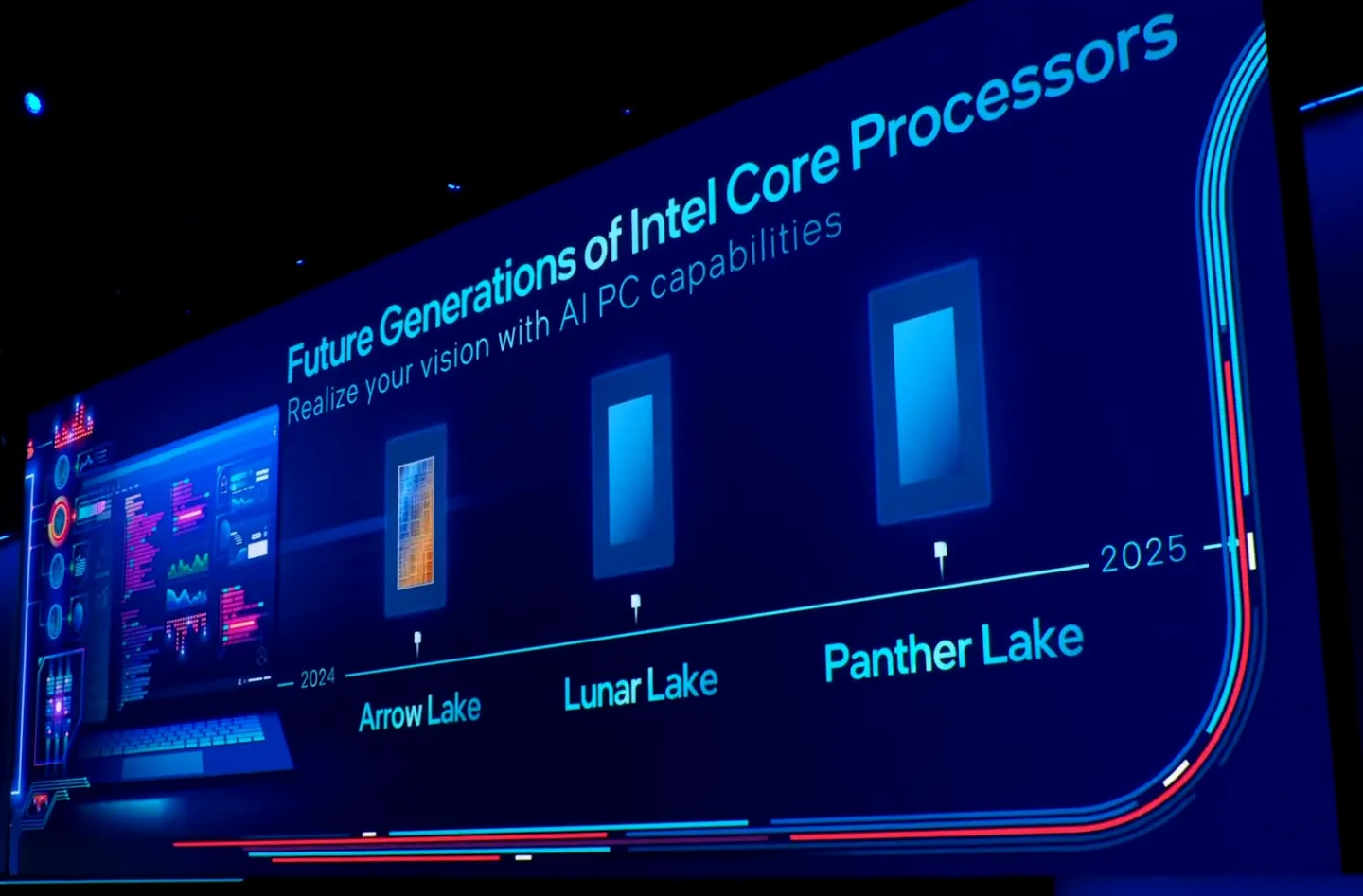Intel's CPU Roadmap: 15th Gen Arrow Lake, Panther Lake and Nova Lake
Tuesday, January 02, 2024Intel CPU Roadmap
Intel has recently updated its CPU roadmap for the next few years, revealing some interesting details about its upcoming 15th Gen Arrow Lake, Panther and Nova Lake processors. These chips will use a mix of different architectures and process nodes, aiming to deliver better performance and efficiency across various segments.
Arrow Lake: The successor to Alder Lake
The first product in the 15th Gen lineup is Arrow Lake, which will succeed Alder Lake in late 2024 or early 2025. Arrow Lake will use a similar hybrid design as Alder Lake, combining high-performance Golden Cove cores with power-efficient Gracemont cores. However, Arrow Lake will also introduce a new type of core, called the XPU core, which will handle specialized tasks such as AI, graphics, and security.
According to Intel, the XPU core will be based on the Xe architecture, which is also used for Intel’s discrete GPUs. The XPU core will have its own cache and memory subsystem, and will communicate with the other cores via a new interconnect called Xe Link. Intel claims that the XPU core will offer up to 10x higher performance per watt than a traditional CPU core for certain workloads.
Arrow Lake will also feature a new memory technology, called DDR5X. This is an enhanced version of DDR5, which will offer higher bandwidth and lower latency than the standard DDR5. Intel says that DDR5X will be compatible with DDR5, but will require a new motherboard chipset to support it.
Arrow Lake will be fabricated on Intel’s 7nm process node, which is expected to be ready by 2024. Intel says that its 7nm node will offer a 2x improvement in transistor density and a 20% improvement in performance per watt over its 10nm node.
Panther Lake: The first 5nm CPU from Intel
The second product in the 15th Gen lineup is Panther, which will be the first CPU from Intel to use its 5nm process node. Panther will be a monolithic design, meaning that it will not use a hybrid or a chiplet approach. Instead, it will have a single die with up to 16 cores, all based on the Ocean Cove architecture.
Ocean Cove is the successor to Golden Cove, and will offer a significant boost in IPC (instructions per cycle) and frequency over its predecessor. Intel says that Ocean Cove will also have improved support for AI, security, and encryption features.
Panther will be compatible with the same DDR5X memory technology as Arrow Lake, and will also support PCIe 5.0 and CXL 2.0 interfaces. Panther will target the high-end desktop and workstation markets, and will compete with AMD’s Zen 4 and Zen 5 CPUs.
Nova Lake: The next-gen hybrid CPU from Intel
The third product in the 15th Gen lineup is Nova Lake, which will be the next-generation hybrid CPU from Intel. Nova Lake will combine Ocean Cove cores with a new generation of power-efficient cores, called Redwood Cove. Redwood Cove will be the successor to Gracemont, and will offer a higher IPC and frequency than its predecessor.
Nova Lake will also feature a new version of the XPU core, called the XPU 2.0. This will be an upgraded version of the XPU core in Arrow Lake, with more performance and features. Intel says that the XPU 2.0 will be able to handle graphics, AI, security, and networking tasks, and will also support ray tracing and variable rate shading.
Nova Lake will be fabricated on Intel’s 5nm process node, and will support the same DDR5X memory technology as Arrow Lake and Panther. Nova Lake will target the mainstream desktop and laptop markets, and will compete with AMD’s Zen 5 and Zen 6 CPUs.
Intel’s CPU roadmap for 2023-2025 shows that the company is not giving up on its innovation and leadership in the CPU market. Intel is planning to introduce new architectures, process nodes, memory technologies, and core types, to deliver better performance and efficiency across various segments. Intel hopes that its 15th Gen CPUs will help it regain its lost market share and reputation, and challenge AMD’s dominance in the CPU space.

